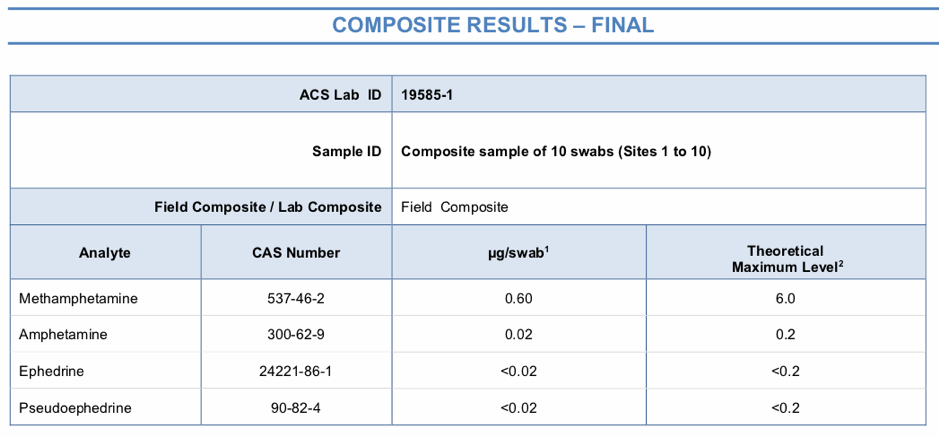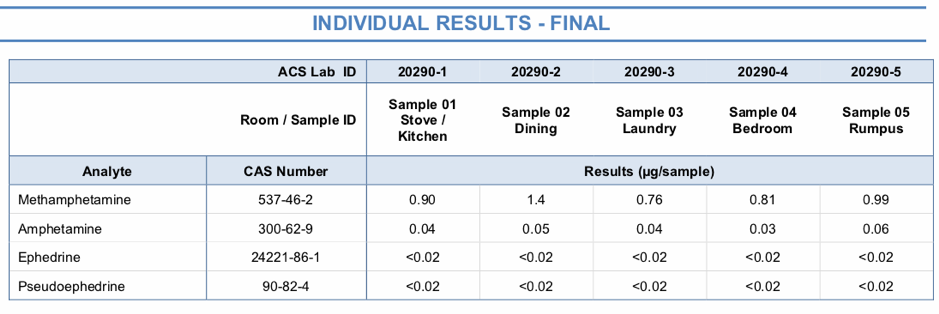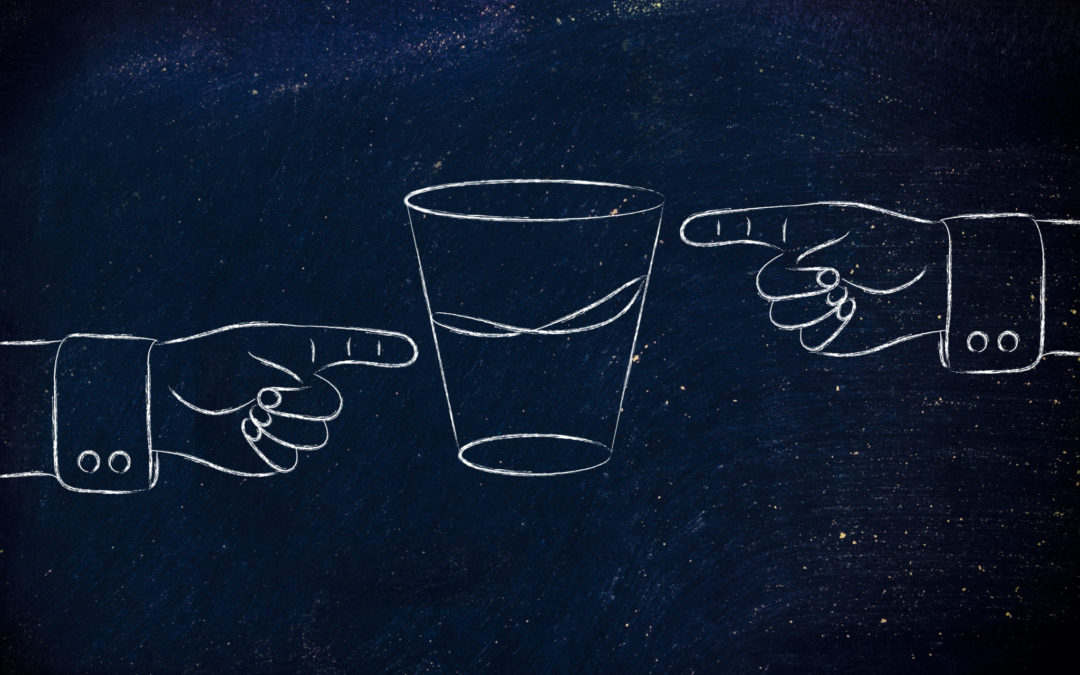Your business reputation and that of the industry you are part of, will either be enhanced or compromised by your actions. We have a responsibility to do the right thing. This article provides some thoughts as to what the right thing might look like.
Since the emergence of the methamphetamine contamination industry in Australia there has been inconsistency, a lack of knowledge and confusion around the available tests, what the results mean, and remediation required in the event of a positive outcome. There has also been numerous media items and statements from a number of industry service providers about levels of contamination without providing meaningful context. This has the potential to create fear and panic amongst consumers who are uneducated on the matter.
Those in the meth testing and decontamination industry have a duty to educate and consult their clients to ensure the following:
1. Clients are aware of the full suite of testing options available to them
2. Clients are aware of any limitations for each test option
3. Clients are able to make an informed decision that best meet their needs and expectations
4. Clients have an understanding of testing results and options available to them in the event of a positive
Common Terminology
NIOSH 9111 – a globally recognised sampling and analytical method used to measure methamphetamines.
Theoretical Maximum – the maximum level of contamination possible for any one sample within a composite test. A worst-case scenario.
Composite – combining a minimum of two or more samples, resulting in a combined result (theoretical maximum).
So what is it that defines unacceptable levels of meth residue on a surface? The Australian Clandestine Drug Laboratory Remediation Guidelines state that:
“the presence of methamphetamine on inside surfaces at a level of greater than 0.5 micrograms (μg) per 100cm2 is considered unacceptable”
Types of Tests
1. Screening
The purpose of a screening test is to determine whether meth residue is present on a surface and if so, whether the level exceeds 0.5 micrograms / 100cm2. If there is a strong suspicion that contamination exists, then screening may not be necessary.
There are 3 types of screening tests commonly used throughout Australia.
Instant/Immunoassay – calibrated at 0.5 micrograms, this test will provide a Yes/No result within minutes. Swabs are taken using a 100cm2 template and mixed with a buffer solution that is dropped into a results cassette. See video for a demonstration.
Field/Base Composite – a laboratory analysed test in which individual samples are collected from multiple locations using a 100cm2 template and placed together in a one test tube e.g. 5 samples, 1 test tube. Once analysed the lab will report both a combined result of all samples within the composite, otherwise known as a theoretical maximum, and the average level of contamination. It will not determine exact levels and location of contamination as all samples were placed into a single tube.
*Field Composite Report Example

· Theoretical Maximum (TM) = 6.0 (remember this is a combined total of all 10 samples collected)
· Average Level of Contamination = 0.60 (TM / number of samples collected)
Laboratory Composite – a NIOSH 9111 compliant laboratory analysed test in which individual samples are collected from multiple locations using a 100cm2 template, with each placed in an individual test tube e.g. 10 samples, 10 test tubes. Once analysed the lab will provide a report defining the theoretical maximum and average level of contamination. It will not determine exact levels and location of contamination however the greatest advantage of a laboratory composite is the ability to have the samples analysed individually in the event of a positive result. The laboratory will generally store samples for 3-4 weeks.
*Laboratory Composite Report Example

· Theoretical Maximum (TM) = 43.0
· Average Level of Contamination = 4.3 (TM / number of samples collected)
Should a composite test return a theoretical maximum above 0.5 micrograms / 100cm2, further individual/discrete sampling is generally required.
2. Individual/Discrete
The purpose of individual/discrete testing is to determine the severity and location of contamination. It is the most detailed form of testing available, and also the most expensive.
Discrete testing is NIOSH 9111 compliant. It should be conducted in the following circumstances:
a) Screening tests have returned a positive result
b) There is a strong suspicion of contamination and screening has been deemed unnecessary
*Individual/Discrete Testing Report Example

· Sample 01 Stove/Kitchen = 0.90 – POSITIVE
· Sample 02 Dining = 1.4 – POSITIVE
· Sample 03 Laundry = 0.76 – POSITIVE
· Sample 04 Bedroom = 0.81 – POSITIVE
· Sample 05 Rumpus = 0.99 – POSITIVE
As a client it is imperative that you understand the difference between an instant test, composite test, and a discrete/individual sample. You are very likely to see a significant variation in results for a contaminated property.
There are various job specific factors that must be considered during test selection. Each test type has its pros and cons, with some not being suitable for certain circumstances e.g. using instant tests for tenancy meth risk management.
Having adequately trained and competent technicians is a vital driver in ensuring 1) robust technician-client consultation 2) best practice and standardised operating procedures are consistently applied, and 3) consumers and industry stakeholders become educated on the issue of meth contamination and associated risks.
We have seen a small minority take advantage of the lack of industry regulation and governance to mislead vulnerable consumers for monetary gain. Additionally, there has been a barrage of bickering and pettiness amongst industry services providers seeking to promote themselves at the expense of collaboration to better the industry. It is the landlords, tenants, property managers and insurers that bear the impact of this, whilst the gap widens between various industry parties whose opinions on certain matters differ. Professionalism and integrity. Two traits that must be embedded into the mindset of all those working in or contributing to the development of the meth testing and decontamination industries.
A code of practice and industry association will go a long way to addressing some of these issues. Let’s hope this key foundation can be established sooner rather than later to ensure clarity, consistency and value for those seeking to manage the risk of meth contamination.
“Effectively, change is almost impossible without industry-wide collaboration, cooperation, and consensus.” – Simon Mainwaring
Decon Systems are a training and consultancy company that specialises in educating and raising awareness of methamphetamine contamination. We also offer independent free advice to consumers and industry stakeholders such as property managers and claims assessors. Our team is available any time for a confidential chat about the industry, your concerns or to provide support with report interpretation.
1800 088 994 | info@deconsystems.com.au | www.deconsystems.com.au

